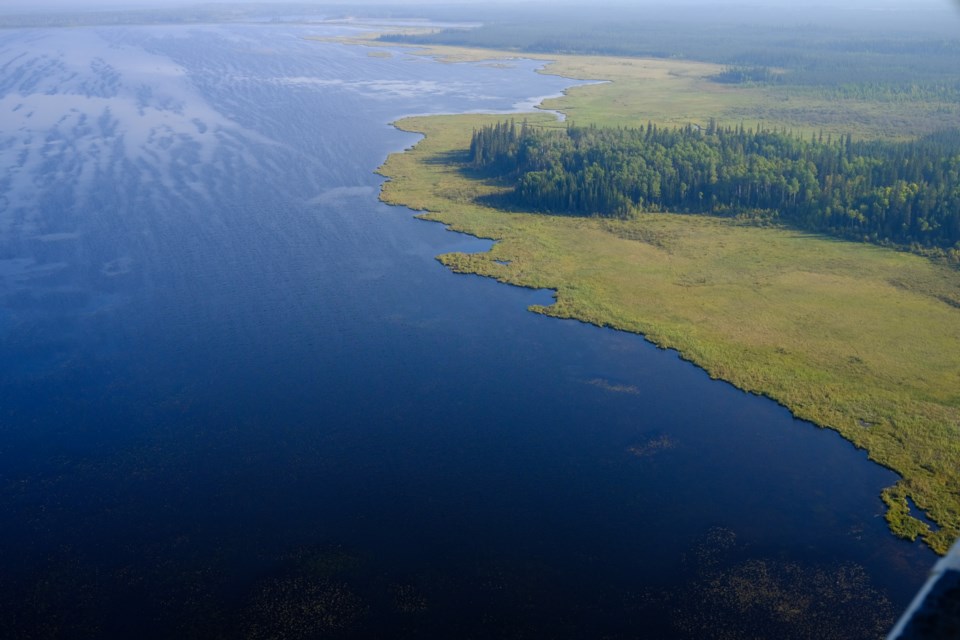What should be done with the Alberta Energy Regulator?
That was the question raised during a recent panel discussion hosted by the Alberta Wilderness Association.
There have been many stories with questions about the Alberta Energy Regulator (AER) in the past few years, according to the conservation group, and too many of them involve environmental damage and minimal imposition on industry.
“All of these different stories have meant a period of sustained scrutiny on the AER and its operations and its decision-making processes, raising questions over its ability to actually adequately regulate the energy industry in the province,” said Phillip Meintzer, conservation specialist with the Alberta Wilderness Association.
Imperial Oil's beleaguered Kearl mining operation represented just one example of the various concerns that prompted the Alberta Wilderness Association to host a panel discussion called Reconsidering the Alberta Energy Regulator.
The Kearl site located 70 kilometres north of Fort McMurray has recently experienced multiple serious spills, leading to a growing public sentiment about how the AER needs to take a more active and open role in both regulating the industry and ensuring public health and safety.
The concerns stem not just from the negative environmental effects of the events themselves but also from the insufficient communication with the public. In one case from May 2022, workers on site discovered what was first described as "discoloured water" leaking from a tailings pond but it was later determined to be groundwater mixed with tailings. Approximately 5.3 million litres of the toxic substance were released into the Athabasca watershed, making it one of the largest spills in Alberta’s history.
Despite what should have been an immediate public warning, Imperial Oil failed to notify the neighbouring Athabasca Chipewyan First Nation until February 2023, a full nine-month period after the fact.
“Nothing is more important than the safety of employees, contractors and neighbours,” reads Imperial Oil’s webpage about the facility, which adds, “We are always looking to improve technologies and practices that reduce our impact on the land, water and air.”
That first warning only came out after the Alberta Energy Regulator issued an environmental protection order, its first public notification on the situation.
“This leak that was hidden for months has had, and will continue to have, adverse environmental and health effects on Indigenous communities—without any accountability taken by Imperial or the AER,” was the public statement made by Indigenous Climate Action.
And that is just the first example. The AER also refused to reconsider its approval for Suncor’s expansion of its Fort Hills mine into the McClelland Lake wetland complex, an area once considered for environmental protection.
In Grande Cache, the CST Canada Coal Mine experienced multiple instability incidents over last year, but the AER explained that those incidents did not meet its criteria for posting to its Compliance Dashboard. That webpage details how the AER is involved in incident response, investigations, compliance and enforcement.
“The Alberta Energy Regulator (AER) brings together the best elements of Alberta’s strong regulatory systems to bring improvements in compliance, enforcement, accountability, and transparency to Alberta’s energy development activities,” the webpage reads.
The panel discussion, held on Feb. 1, featured commentators including University of Calgary associate law professor Shaun Fluker, Polluter Pay Federation vice-chair Mark Dorin, Keepers of the Water executive director Jesse Cardinal, Canadian Association of Physicians for the Environment president Joe Vipond and Alberta Environmental Network representative Natalie Odd.
Earlier that day, the AWA also hosted a larger group discussion with 30 representatives from different groups across the province. That event allowed the participant organizations to share concerns and brainstorm.
“We thought that if there were synergies that existed there between all these groups, and all of us are demanding change, bringing everybody together was a way to start hashing out what maybe our demands would look like,” Meintzer said.
“What does adequate energy regulation look like in the province? What's missing from the current scope of the AER?”
The panel discussion addressed how the AER acts less like Alberta’s energy regulator and more like the province’s energy facilitator, he said.
“The lack of transparency, lack of public accountability, too much discretionary power … they have too much freedom to make decisions without scrutiny, and then the fact that the board is almost entirely industry-dominated, which lends itself to this idea of industry capture,” he said, referring to the theory that theory that regulatory agencies may be dominated by the business interests they regulate, not by the public interest.
“It retains no independence from industry. There's no reason why industry experts couldn't be there to help advise, but it shouldn't be 100 per cent industry dominated or controlled.”




